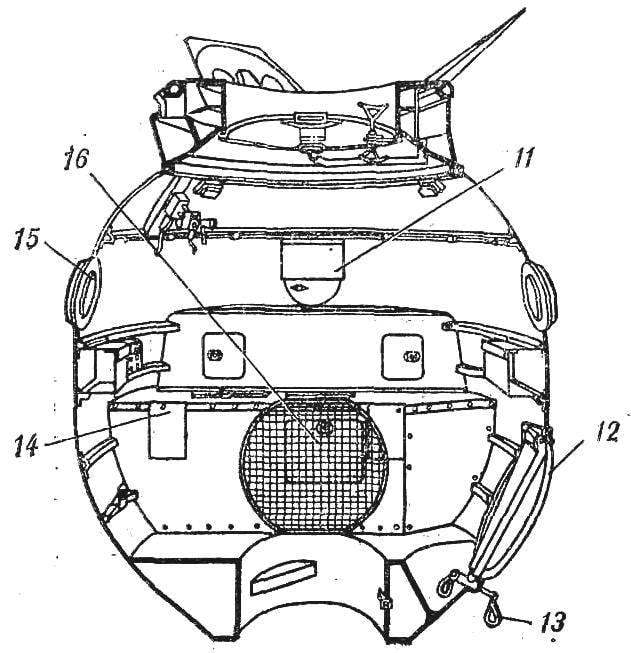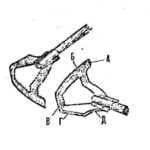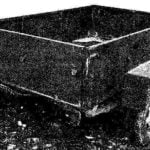 And again start. The same, now familiar sequence of events. A meeting of the State Commission, which approved the crew. The meeting on the launch pad, the report of astronauts before flight and last minute expectations. And finally, painfully long 520 seconds — the time in which the missile brings the next Soyuz to orbit.
And again start. The same, now familiar sequence of events. A meeting of the State Commission, which approved the crew. The meeting on the launch pad, the report of astronauts before flight and last minute expectations. And finally, painfully long 520 seconds — the time in which the missile brings the next Soyuz to orbit.
No, this can not be used. No matter how many of these runs, starting with the now legendary flight of Yuri Gagarin and to “work” starts today orbital laboratories — a penetration man in space remains the most important event of the day.
It seems recently, in accordance with the Soviet program of preparation for experimental joint flight of space ships Soyuz and Apollo manned spacecraft “Soyuz-16” was launched cosmonauts A. Filipchenko and N. Rukavishnikov. Tests conducted by them, rightly called a dress rehearsal, showed to the experiment we’re all set. All the novelties made to the ship’s designers, worked perfectly. Successfully completed a simulation of the upcoming docking.
Space exploration continues. At the end of Dec ka acloseding the orbit has released a new scientific station “Salyut-4”. And on January 11 from the Baikonur cosmodrome launched the spacecraft — new, seventeenth “Union”. It was piloted by commander Colonel Gubarev and flight engineer Grechko. An extensive program of experiments that were part of the crew, was also successfully completed.
There will be many more new flights into space. Not a single new manned spacecraft will lead the earth’s gravity was the Soviet people. And each launch will signify a new star step of mankind, a new stage in the knowledge of the mysteries of nature.
At the request of participants of the all-Union competition “Space” we publish in this number the drawings of models of the docked space ships “Soyuz” and “Apollo”, developed by master of sports V. ROZHKOV.

Fig. 1. Model of manned space systems “Soyuz” — “Apollo”:
1 — nozzle, 2 — compartment Apollo 3 — lander is a 4 — airlock, 5 — androgynous docking port, 6 — orbital compartment “Union”, 7 — lander, 8 — optical viewfinder-orientator, 9 — compartment, 10 — solar battery panel, 11 — gauge on the brake, 12 — blizhayshie-corrective (basic) engine, 13 — duplicate correcting engine, 14 — steering nozzle.

Fig. 2. Androgynous docking station:
1 — lock on the ship’s hull, 2 — the guide on the side of petal, 3 — socket ring with eight locks, 4 — power cylinders for the nomination ahead of the guide ring (5) and retraction of the ships 6 — the lock on the petal.
What are the pilot space ships and docking unit? Still in the USSR and the USA used different systems of rendezvous and docking of spacecraft. This was the first problem that had to be solved by scientists. Stopped on the principle of peripheral design of the docking device of the androgynous type. This design differs from previous ones in that instead of the center pin (active coupling) and a receiving cone (passive) each vehicle will be located at the periphery of the docking unit guides the petals of the tightening device and the castles; in the Central part of the hatches, which will be implemented through the transfer of astronauts.
The second problem that faced scientists and constructors and have been successfully resolved by them, is different (as in chemical composition, and atmospheric pressure) atmosphere of the “Union” and “Apollo”.
In the crew quarters of the Union (the descent module and orbital) of the atmosphere consists of ordinary air at a pressure of 660-860 mm Hg. article the Atmosphere of the spacecraft “Apollo” — pure oxygen at a pressure of 260 mm Hg. St. Therefore, for the transfer of astronauts from ship to ship required a special compartment, performing the role of airlock for adaptation.
During the transition from Apollo to Soyuz astronauts would have to stay in the airlock for 25 minutes. In the transition from Soyuz to Apollo astronauts in spacesuits must be in the area almost two and a half hours with a gradual decrease in pressure up to 260 mm Hg. article It is necessary to remove nitrogen from the body and prevent decompression sickness.
To reduce the time for pre-breathing during the transfer of astronauts from ship to ship, the total pressure in the “Union” reduced to 490-550 mm Hg. article the Climate with such parameters in the living modules were first tested during the flight of spacecraft “Soyuz-16”.

Fig. 3. Lander:
1 — Vizir-orientator, 2 — panel, 3 — camera, 4 — command and signaling unit (CCU), 5 — manhole, 6 — wheel manhole, 7 — panel, 8 — window, 9 — seat, 10 — control knob.


Fig. 4. Orbital compartment:
left side: 1 — connecting unit, 2 — unit control docking system, 3 — lever, 4 guide, 5, 10 — camera, 6 — fan, 7 — control orbital module, 8 — table, 9 — camera; starboard: 11 — analyzer, 12 — cover, 13 — handle, 14 — seat, 15 — window, 16 — suits.
How will the dock? The Soyuz spacecraft is controlled by a system orientation and movement control. It includes ion sensors “acceleration” and “deceleration” and complex Executive. The motors are located on the instrument-aggregate compartment. On the upper frame of the orbital compartment mounted node dock androgynous type. Airlock “bears” spaceship “Apollo”. The first starts from the cosmodrome Baikonur, the Soviet space Shuttle “Soyuz”. Seven-and-a-half hours will start Apollo.
About a day the ships will make their first solo flight, then will be their rendezvous and dock In the docked position, the ships form a manned space system. This flight will last two days.
After docking, two American astronauts will move through docking compartment in the Soyuz and bring a television camera to transmit images to the Ground. After two and a half hours they’ll go back to “Apollo”. The next day in the “Apollo” become a Soviet cosmonaut. According to the accepted rules one Soviet and one American astronaut will always be at the controls of their ships. Then there will be the undocking of the spacecraft, and each of them will continue the flight according to its individual programme.
Before you start making models of “Soyuz” and “Apollo”, you need to make the mandrel. They can you to sharpen on a lathe from any material (wood, plastic). All sizes for the mandrels as shown on figure 1, it will reduce by 1.5 mm (thickness of paper will wycliffite corps).
Model of the spacecraft “Apollo” made of five layers of construction paper, glued with joiner’s glue. Exterior parts and engines control — made of wood. The nozzle of the sustainer engine it is necessary to carve out of aluminum and glued to the bottom on the resin ED-5. Airlock — also made of paper, the outer rings of cardboard, balls are made of wood. For manufacturing a connecting node (see Fig. 2) used plywood with a thickness of 1.5 mm and a thin pine slats 3X2 mm and Ø1 mm wire for making hinges,
Orbital compartment and a descent vehicle of the model “Union” vilate by “papier-mache” on the mandrel; after drying, cut into two pieces and again glue along the inside. Compartment glue from the paper. Solar panels cut out of plywood and color black, marked out with a Scriber squares of the elements. The panels are attached in two places to the instrument-aggregate compartment. The Windows of the descent module and orbital module was manufactured from Plexiglas with a thickness of 1,5 mm. the Entire model is covered with five layers of nitroblue AK-20, and then painted, as shown in tab.
For those who want to design the interior of the orbital module and the descent module, in figures 3 and 4 show the location and relative size of major parts, components and assemblies.
V. ROZHKOV, master of sports of the USSR



